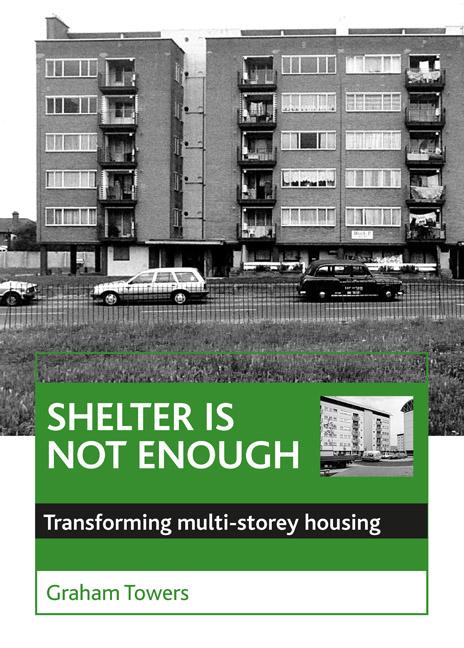Book contents
- Frontmatter
- Contents
- List of figures and tables
- Dedication
- Preface
- Foreword
- one Introduction
- two Forming the multi-storey legacy
- three Politics, economics and housing form
- four Social stigma and community action
- five Redeeming the estates
- six Facets of regeneration
- seven Building a model framework
- eight Prospects for transformation
- nine Ending the estate syndrome
- ten On broader horizons ...
- Bibliography
- Appendix: Case study research
- Index
five - Redeeming the estates
Published online by Cambridge University Press: 05 July 2022
- Frontmatter
- Contents
- List of figures and tables
- Dedication
- Preface
- Foreword
- one Introduction
- two Forming the multi-storey legacy
- three Politics, economics and housing form
- four Social stigma and community action
- five Redeeming the estates
- six Facets of regeneration
- seven Building a model framework
- eight Prospects for transformation
- nine Ending the estate syndrome
- ten On broader horizons ...
- Bibliography
- Appendix: Case study research
- Index
Summary
By the mid-1970s the multi-storey legacy was substantially complete. There were more than 1,850,000 local authority flats, the great majority of them in inner areas of large industrial cities. Around 300,000 consisted of tenement-type blocks built before the Second World War or shortly afterwards. More than 600,000 were in high-rise tower blocks and slab blocks built in the 1950s and 1960s (Glendinning and Muthesius, 1994, p 1ff). There were up to 350,000 flats in high-density ‘medium-rise’ estates built from the late 1960s onwards (Dunleavy, 1981, p 41ff; DoE, 1993a). The remainder comprised low-rise post-war blocks of various types. Much of the oldest stock was run-down and substandard. Some of the newer blocks were exhibiting technical problems, particularly the 500,000 or more which were built using industrialised systems. Many estates were degraded by the problems of use and social stigma.
As local authorities began to turn their attention to their troublesome legacy of multi-storey estates, a range of disparate approaches were taken, partly as a result of an unsympathetic funding regime. Some councils sought to dispose of the problem altogether. For those that didn’t, many were content simply to repair and maintain while others introduced modest improvements which proved partial and inadequate. Eventually, the most effective approach to improvement was provided by the application of more generous funding and the adoption of the new priorities established by community architecture. The preservation of established communities, participation of tenants in the design and development process, and decentralisation of decision making became the key to successful estate modernisation.
From the mid-1980s, improvements to housing estates became increasingly dependent on programmes funded and controlled by central government. Programmes such as Estate Action and Housing Action Trusts had their roots in political priorities and, initially, were resented and resisted by local authorities and tenants organisations. In their engagement with reality, however, government programme managers were forced to compromise. The single-minded pursuit of policy gave way to a more pragmatic approach. Nevertheless, centralised funding reduced the power of local authorities and restricted the establishment of community-based priorities. Smaller and older estates were neglected while major funding was channelled into modernising the most high profile problem estates. The focused approach which developed from the late 1980s was not only highly selective, its effectiveness was increasingly open to question.
- Type
- Chapter
- Information
- Shelter Is Not EnoughTransforming Multi-Storey Housing, pp. 87 - 108Publisher: Bristol University PressPrint publication year: 2000



